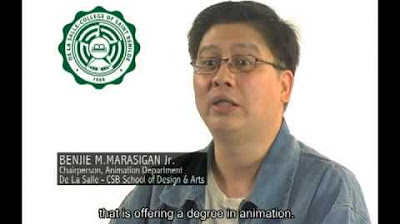JENIS ANIMASI
Summary
TLDRThis video explores various animation techniques, from traditional methods like classic hand-drawn cell animation to modern computer-generated imagery (CGI). It covers diverse types such as stop motion, pixilation, and object-based animation, as well as animation styles ranging from realistic to exaggerated. The video delves into key production techniques like frame-by-frame animation, keyframe animation, and path animation, explaining their unique applications in commercials, films, and educational content. With practical examples, the video provides a thorough overview of animation's history, evolution, and methods, encouraging viewers to engage creatively in their own animation projects.
Takeaways
- 😀 Animation comes in various types and techniques, ranging from classical animation to computer-generated 3D animation.
- 😀 Classical animation involves creating individual drawings on transparent sheets (cels), which are then layered to form a moving sequence.
- 😀 Stop-motion animation captures incremental movements of objects (e.g., puppets, clay figures) to create motion through frame-by-frame photography.
- 😀 Computer animation simplifies the process by using software tools to generate movement, which is faster and more flexible than traditional methods.
- 😀 Model animation uses abstract shapes like cubes or spheres to represent scientific phenomena, while puppet animation involves moving physical figures.
- 😀 Pixelation is a technique where human figures are used in stop-motion to simulate actions in frame-by-frame sequences.
- 😀 Collage animation involves arranging physical objects or characters on a surface, then animating them frame by frame.
- 😀 Direct animation involves drawing directly onto the filmstrip, creating images without intermediary drawings or cels.
- 😀 Keyframe animation involves marking major movement points in the sequence, with in-between frames automatically generated by software.
- 😀 Different animation styles include photocopy animation (realistic), limited animation (simplified for TV series), and exaggerated animation (dramatic and expressive for emotional impact).
Q & A
What is classical animation, and how is it different from other animation techniques?
-Classical animation involves using cell animation, where each frame is drawn by hand on transparent sheets (cells) and then layered over backgrounds. This technique requires meticulous planning and a manual process, making it resource-intensive and difficult to correct errors once they occur during production.
What are the main differences between stop-motion animation and computer animation?
-Stop-motion animation uses physical objects or figures, moving them slightly and photographing them frame by frame. In contrast, computer animation uses digital tools to create and manipulate images, offering greater flexibility and speed in production.
What is 'pixilation' in animation, and how is it different from other animation techniques?
-Pixilation is a technique where human figures are used as objects in an animation. The figures are moved slightly and photographed frame by frame, creating a stop-motion effect. It differs from other types of animation, such as object animation, which uses inanimate objects or figures instead of humans.
How does keyframe animation work, and what role does the computer play in it?
-In keyframe animation, the animator sets specific start and end points for a movement. The computer then automatically fills in the frames in between, creating a smooth transition between these key positions. This technique simplifies the animation process compared to frame-by-frame animation.
What is the purpose of path animation, and how is it implemented?
-Path animation involves defining a specific path or curve along which an object moves. The animator draws the path, and the object follows this defined route during the animation, which can be a straight line or a curve. This technique is useful for creating predictable and smooth motions.
What is the difference between frame-by-frame animation and keyframe animation?
-Frame-by-frame animation involves creating each individual frame manually, making the process slower and more detailed. Keyframe animation, on the other hand, focuses on defining only the start and end points of a movement, with the computer generating the in-between frames, making it more efficient.
How does vector animation differ from other animation styles?
-Vector animation uses geometric shapes and mathematical formulas to create movement, rather than relying on raster images or hand-drawn frames. This style is often used for smoother, scalable animations, such as in digital cartoons or graphics.
What are the key characteristics of exaggerated or dramatic animation?
-Exaggerated animation emphasizes overly dramatic movements and expressions to enhance the emotional impact of a scene. This style is often used to highlight specific moments or characters, making the animation feel more expressive and engaging.
What is the significance of using limited animation in series productions?
-Limited animation is used in series production to keep the production costs low while maintaining a high output of episodes. It simplifies the animation process by reducing the number of frames and minimizing intricate movements, making it ideal for TV cartoons and serial animations.
What are the common durations for different types of animation, and what are their typical uses?
-Animations vary in duration: short animations (10-60 seconds) are often used for ads; medium animations (2-20 minutes) are typically seen in TV series; and feature-length animations (over 50 minutes) are used in full-length films. These durations are chosen based on the type of story being told and the intended audience.
Outlines

Dieser Bereich ist nur für Premium-Benutzer verfügbar. Bitte führen Sie ein Upgrade durch, um auf diesen Abschnitt zuzugreifen.
Upgrade durchführenMindmap

Dieser Bereich ist nur für Premium-Benutzer verfügbar. Bitte führen Sie ein Upgrade durch, um auf diesen Abschnitt zuzugreifen.
Upgrade durchführenKeywords

Dieser Bereich ist nur für Premium-Benutzer verfügbar. Bitte führen Sie ein Upgrade durch, um auf diesen Abschnitt zuzugreifen.
Upgrade durchführenHighlights

Dieser Bereich ist nur für Premium-Benutzer verfügbar. Bitte führen Sie ein Upgrade durch, um auf diesen Abschnitt zuzugreifen.
Upgrade durchführenTranscripts

Dieser Bereich ist nur für Premium-Benutzer verfügbar. Bitte führen Sie ein Upgrade durch, um auf diesen Abschnitt zuzugreifen.
Upgrade durchführen5.0 / 5 (0 votes)






